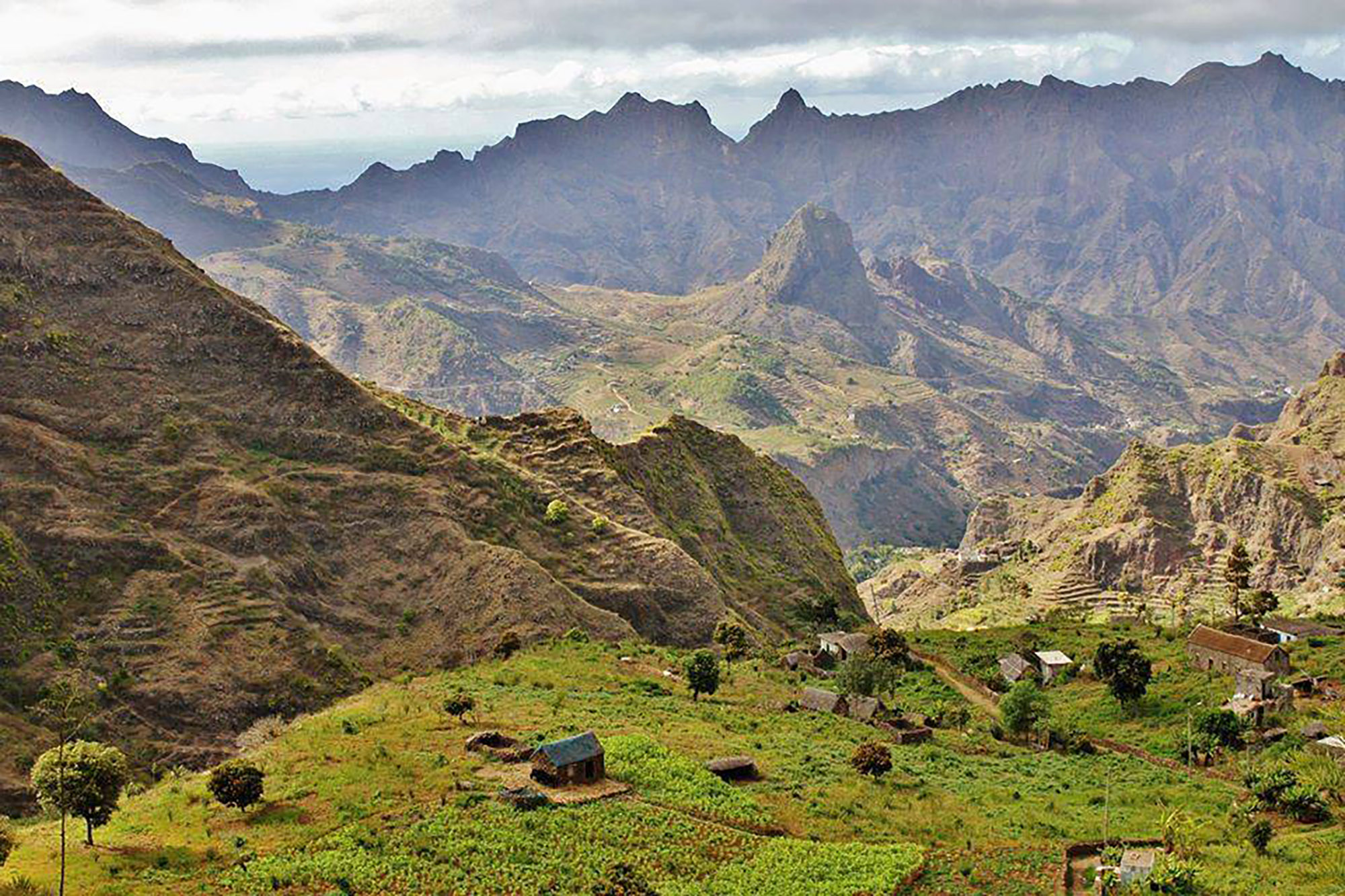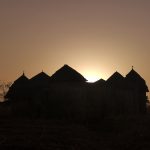The second island of Cape Verde, Santo Antão is undoubtedly the national hiking capital with its dozens of kilometers of marked trails. Of volcanic origin, the territory boasts sumptuous landscapes made up of fertile valleys, majestic mountains and a beautifully jagged coastline.
Take a detour to Santo Antão on your next trip to Cape Verde and discover a small natural paradise at the crossroads of Africa, South America and Europe.
Bountiful nature and contrasting landscapes in Santo Antão
Like its particular geography at the crossroads of influences, Santo Antão surprises with the variety of landscapes that characterize it. The island indeed seems to be cut in two by imposing mountains, with deep valleys at its heart and steep cliffs on its coast.
It will thus be possible in a single day of travel to go from the temperate climate of the North where bananas, sugar cane and many tropical plants grow, to the arid and desert climate of the South. The exuberance of the tropical forest against large rocky spaces, the fertile valleys against a hostile desert where life is scarce … Two regions that everything opposes and which nevertheless belong to the same territory, a land which will only surprise you if you opt for a combination of islands in Cape Verde.
Discovering Santo Antão also inevitably means visiting the sumptuous Paul Valley. Similar to a Garden of Eden, it is home to hundreds of species of tropical plants, trees and flowers, all watered by an ingenious irrigation system. The hikers evolve there on a path crossing vast plantations of cassava, bananas and sugar canes during a 5-hour walk.
Of course, the small picturesque villages are also part of the scenery: Porto Novo and its charming colonial houses, Fontainhas and its high perched center, not to mention the unmissable Pedracin and its mud and stone houses … The latter is a perfectly ecotourism complex. adapted to its environment, a sort of village-hotel ideal for recharging your batteries in the heart of nature. As for Fontainhas, it is a small typical Cape Verdean village with its colorful little houses, its plunging view of the Atlantic and its lush natural environment.


Santo Antão, a trekking paradise surrounded by nature
Only accessible by boat, the island of Santo Antão attracts hiking enthusiasts from all over the world. You will discover several hundred kilometers of walking there, including routes allowing you to cross Santo Antão on foot. Along the way, scenes of local life, traditional distilleries, green valleys and craggy peaks follow one another without ever being alike.
Crossing the island on foot allows you to discover the astonishing contrast between the volcanic and chaotic south and the north, a true lush universe where terraced crops and green valleys plunge into the ocean come together.
Many travelers who decide to go hiking in Santo Antão take the opportunity to stay with the locals. Combining hikes and nights with locals is the perfect opportunity to immerse yourself in rural life and make memorable encounters. The very definition of an authentic trip.
Among the hikes not to be missed, that of the Janela Valley allows you to evolve in the middle of orange trees, banana trees and mango trees during a 4-hour walk. Highlight of this trek: the Rocha Scribida, a rock engraved with mysterious inscriptions whose origin remains unknown today.
If you are not afraid to climb and want to access beautiful views of the region, head to the Cova de Paul crater. The climb is short but very steep. When you arrive at the top, you will be rewarded with a panorama of almost the whole island, at an altitude of 1,200 meters.
Many of the Santo Antão valleys are only accessible on foot and you will often feel like you are alone in the world walking the deserted paths.


Santo Antao and the culture of rum
Reflecting the crossbreeding between Africa and Europe, Santo Antão is also a land of rum, where the beverage is made using ancestral techniques that are passed down from generation to generation. Here you will find some trapiches (mills) that are more than four centuries old and still used to make the grogue in the traditional way.
Take advantage of your stay in Santo Antão to visit a local distillery and learn about rum-making processes.
Sugar cane is harvested between spring and summer in the north of the country. It is then stripped by hand and then passed through the trapiche, a mill operated by oxen. The syrup thus obtained is left to ferment for several weeks before being heated in the still. After distillation, the rhumb obtained is stored in oak barrels where it will remain from several months to several years, taking on a nicely amber color over time.
A visit to a distillery on Santo Antão allows you to meet these workers who, in the shadows, perform real miracles. Many of the rums made here never leave the island and are tasted on site at the end of the visit. You will probably have the choice between a banana, passion fruit, orange or even coconut grogue. Other variations: punch, caipirinha and other cocktails that only Cape Verdeans have the secret.
Rum can be tasted here everywhere, from seaside bars to restaurants, hotels or the market. Be sure to bring back a bottle as a souvenir of a wonderful trip to the heart of the Atlantic.


Take a look at our trips to Cape Verde and let’s organize your visit to Santo Antão together. The greenest and most forested island of the archipelago represents a true paradise for hikers with its hundreds of hiking trails, its lost valleys and its craggy coastline. Between sea and mountains, a 100% natural journey awaits you!



